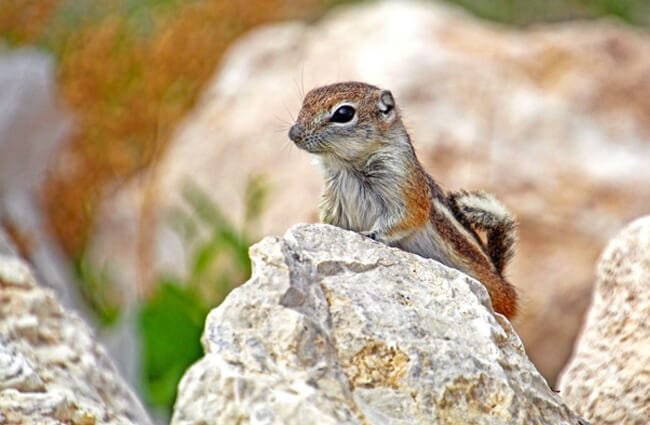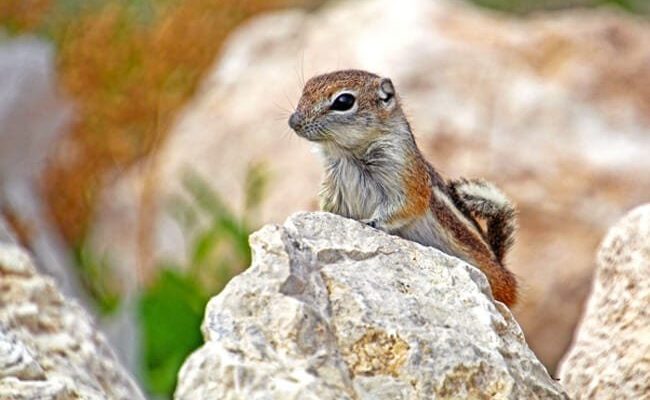
Imagine if you could wander into a ground squirrel’s world. Their habitats stretch across different terrains, from rocky hillsides to lush grasslands. But it’s not just about the scenery. These little animals have specific preferences that guide where they set up shop. So, let’s dig deeper into the ground squirrel experience and explore where they live and thrive!
What Are Ground Squirrels?
Before we dive into their habitats, let’s clarify what ground squirrels are. They belong to the family Sciuridae, which includes tree squirrels, flying squirrels, and chipmunks. Ground squirrels generally live in burrows and have a more terrestrial lifestyle compared to their tree-dwelling cousins. The most common species in North America include the California ground squirrel and the 13-lined ground squirrel.
Physically, they’re small to medium-sized rodents, typically weighing between 1 and 2.5 pounds, depending on the species. With their brownish or grayish fur, they can blend with their surroundings, making them quite the little ninjas of the rodent world. You might be wondering how they adapt to different environments—well, that’s all part of their survival strategy!
Types of Habitats
Ground squirrels can be found in a wide variety of habitats. They thrive in places where they can dig burrows and find food. Here are some common habitats you might find them in:
- Grasslands: These open areas provide plenty of food sources, like grasses and seeds. Ground squirrels love to munch on these tasty treats.
- Deserts: Believe it or not, some ground squirrels can even thrive in arid environments, adapting to the heat and finding food and shelter.
- Forests: While they prefer open spaces, some ground squirrels enjoy the edges of forests, where they can find cover and plenty of food.
- Urban areas: Ground squirrels are incredibly adaptable and often make their homes in parks, gardens, and even backyards, where they can easily find food.
Each habitat provides unique benefits, from safety to a variety of food sources. It’s fascinating how these little creatures can find their niche in almost any environment!
Geographic Distribution
Ground squirrels are primarily found across North America, but their range extends further afield. You’ll find different species in various regions, each adapted to their particular environment. For example, the California ground squirrel is mostly found along the western coast, while the 13-lined ground squirrel occupies areas from the Midwest to the eastern United States.
When you think about distribution, you might picture a map dotted with locations. Ground squirrels thrive not just in rural areas but also in suburban locales—think parks and lawns. They’re resourceful little beings that can source food and shelter from unexpected places.
Ground squirrels prefer regions with moderate rainfall. This is crucial because it supports the growth of grasses and plants they eat. They generally avoid excessively wet or very dry areas, thinking about what’s best for their survival.
Burrowing Behavior
One of the most interesting features of ground squirrels is their burrowing behavior. These little architects dig extensive tunnel systems that serve as their homes. Burrows provide shelter from harsh weather and predators, not to mention a cozy place to raise their young. The tunnels often go deep into the ground, sometimes up to several feet!
But digging isn’t just about comfort. The burrows also help maintain a stable temperature, keeping the squirrels cool during hot summer days and warm during chilly nights. Plus, they can escape quickly into their underground homes if danger approaches. You might say their burrows are like a ground squirrel’s personal fortress!
Impact of Habitat on Behavior
The habitat ground squirrels live in has a significant impact on their daily behavior. For instance, in grassland areas with abundant food, you’ll find them foraging more actively. These squirrels are often seen standing upright, scanning their surroundings for potential threats while munching on snacks.
In urban environments, their behavior can change due to human interaction. You might notice they become bolder, approaching people for crumbs or snacks. While this adaptability can be endearing, it can lead to problems, like potential conflicts with pets or car traffic. Ground squirrels are clever, but they also need to be cautious!
Threats to Ground Squirrels
While ground squirrels are generally adaptable, they face several threats that can impact their populations. Habitat loss due to urban development is a significant concern. As cities expand, their natural environments shrink, leaving them with fewer places to thrive.
Another danger comes from predators—hawks, snakes, and even domestic cats can pose a threat. Ground squirrels have developed warning calls to alert others when danger is near, giving them a fighting chance in the wild. However, these warnings only help so much against a determined predator.
Lastly, harsh weather conditions can also impact their survival rates. Severe droughts or extreme cold can make food scarce, turning their lives into a struggle. As resilient as they are, ground squirrels, like all wildlife, depend on a balanced ecosystem to survive.
Conservation and Ground Squirrels
Understanding where ground squirrels live isn’t just about curiosity; it’s also about conservation. Many species are still common, but some are threatened by habitat loss and climate change. Protecting their natural habitats is crucial for their survival.
You might wonder how you can help. Simple actions like supporting local conservation efforts or creating ground squirrel-friendly spaces in your backyard can make a difference. Consider planting native plants that provide food and shelter for these little creatures.
At the community level, raising awareness about the importance of ground squirrels can also contribute to their preservation. They may be small, but they play a vital role in their ecosystems, helping to aerate soil and disperse seeds.
So, where do ground squirrels live? From lush fields to bustling urban parks, these agile little creatures have shown an impressive ability to adapt to a variety of habitats. Their burrowing behavior, geographic distribution, and even their interactions with humans highlight the complex yet fascinating lives they lead.
Understanding ground squirrels is more than just knowing about their home. It’s about appreciating their role in our ecosystem and recognizing the challenges they face. By learning more, we can do our part to protect these charming little inhabitants of our world. Whether you’re spotting one in a park or watching one dart across your lawn, now you have the scoop on their habitats and lives!

